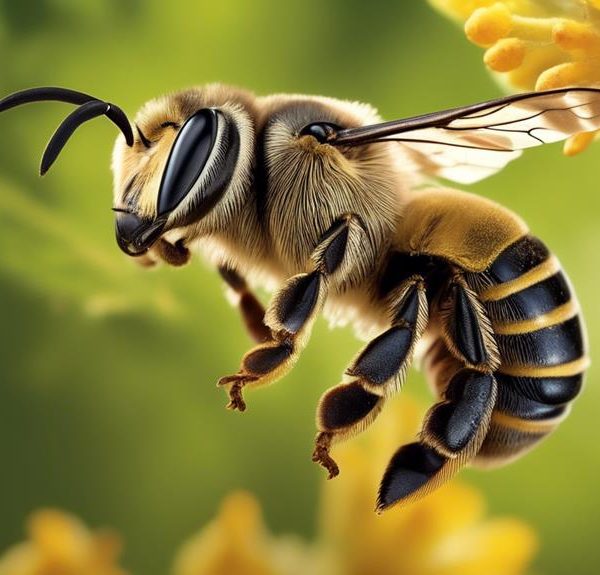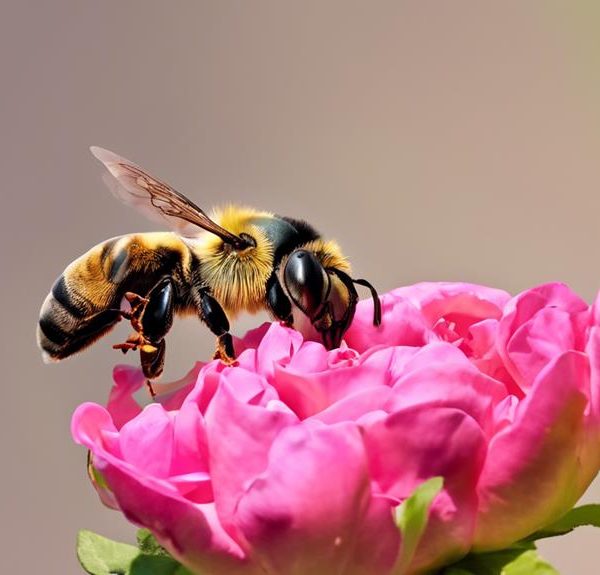Kilometers or mere steps? Discover the surprising distances leaf cutter bees journey in their endless pursuit for perfect foliage.
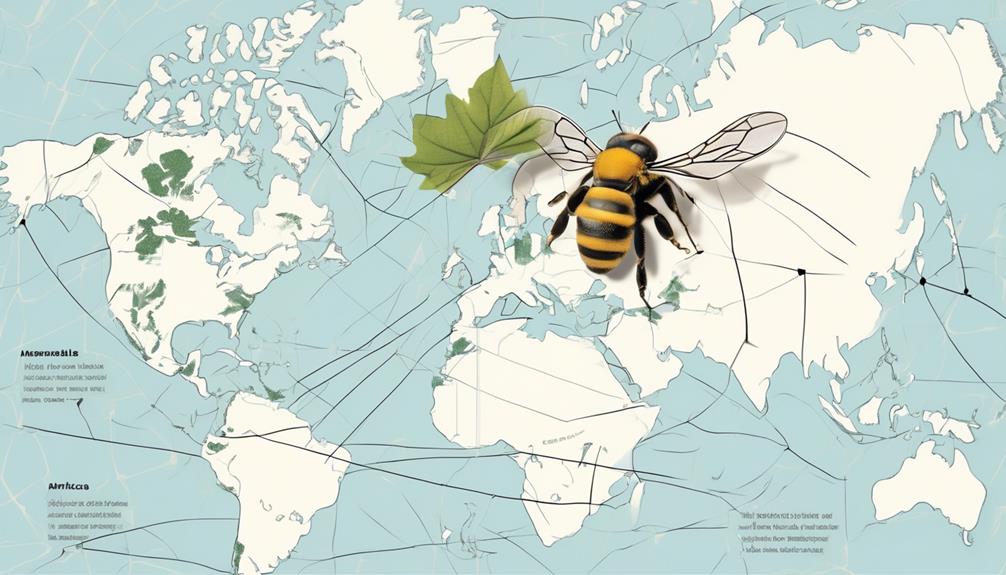
How Far Do Leaf Cutter Bees Travel
With the precision of a blacksmith forging iron, leaf cutter bees meticulously carve out pieces of leaves for their nests.
But have you ever wondered how far these industrious insects travel in their quest for the perfect foliage? Their journey is not as simple as it seems.
Several factors influence their voyage, including resource availability, environmental conditions, and even human activities.
The exploration of these elements will shed light on the often overlooked, yet intriguing topic of the travel patterns of leaf cutter bees.
But brace yourself, for the answers might not be what you'd commonly expect.
Key Takeaways
- Leaf cutter bees are solitary creatures that do not live in colonies like honeybees.
- Environmental conditions such as temperature, humidity, and wind speed significantly influence bee travel.
- Leaf cutter bees can travel up to 600 meters from their nests in search of food.
- Human activities such as deforestation and urbanization disrupt leaf cutter bee movement patterns and limit their travel, food availability, and reproduction capacity.
Understanding Leaf Cutter Bees
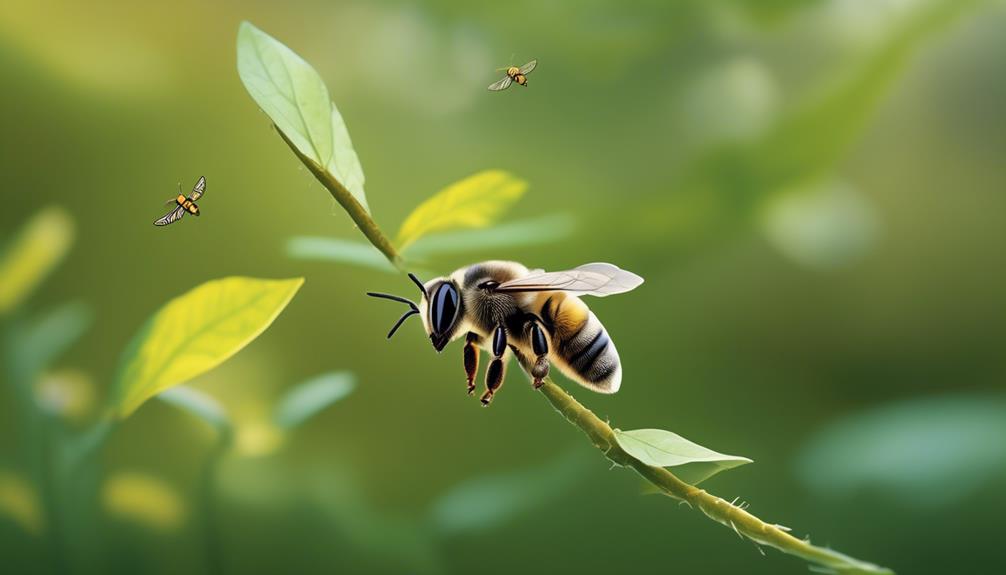
To fully comprehend leaf cutter bees, it's crucial to delve into their distinctive behaviors, ecological role, and remarkable physical attributes.
These bees are solitary creatures, meaning they don't live in a colony like honeybees. You'll see them in action from spring to fall, cutting circular sections from leaves to construct their nests.
Paying close attention to their ecological role, you'll notice that leaf cutter bees are vital pollinators, with a proficiency that surpasses honeybees. They carry pollen on their abdomens, distributing it efficiently as they move from flower to flower. This behavior is indispensable for the survival and reproduction of many plant species.
Analyzing their physical attributes, you'll see that leaf cutter bees are about the same size as honeybees, but differ in color. They've a characteristic black body with bands of white hair across their abdomen. The females are easily recognizable by the leaf fragments they carry beneath their bodies.
Understanding these intricacies not only deepens your knowledge about leaf cutter bees, but also underscores their importance in our ecosystem. Now, you're better equipped to appreciate the role these bees play, and the distances they travel for survival and propagation.
Factors Influencing Bee Travel

Let's delve into the myriad factors that influence the distances leaf cutter bees travel, ranging from environmental conditions and food availability, to their inherent biological programming.
Environmental conditions such as temperature, humidity, and wind speed play a crucial role. Cooler temperatures and higher humidity levels typically lure the bees out to forage. High wind speeds, on the other hand, inhibit their flight, restricting travel distance.
Food availability also greatly affects bee travel. If food sources are abundant and close to the hive, bees don't need to travel far. However, when food is scarce, they're forced to fly longer distances.
Lastly, consider the bees' biological programming. They're hardwired to forage within a specific radius from their nest. If food is found within this radius, they'll rarely venture beyond it. This radius varies among species but is usually within a few kilometers.
Leaf Cutter Bees' Travel Patterns
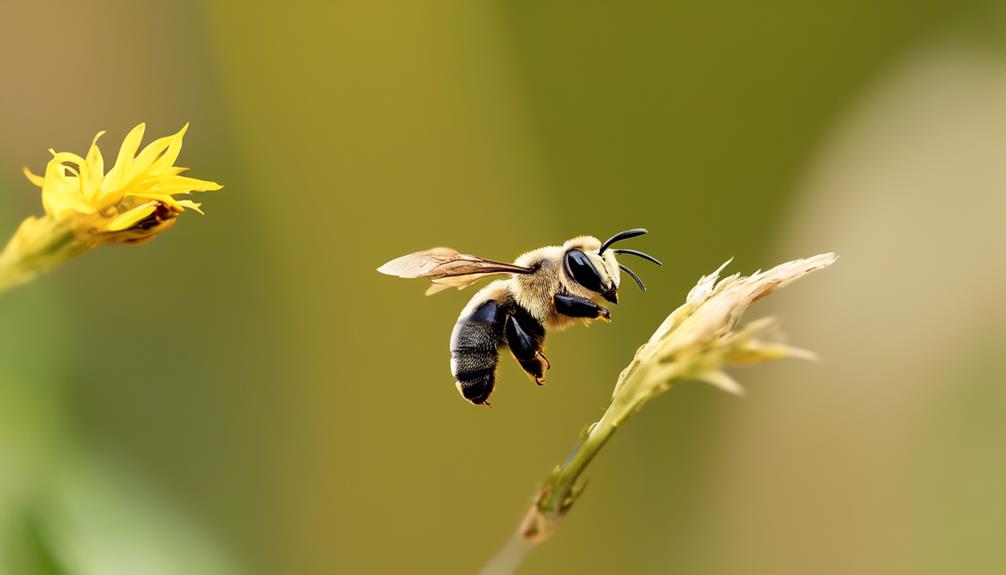
Building on our understanding of the factors influencing bee travel, we can now analyze the specific travel patterns of leaf cutter bees. These bees have unique patterns that are influenced by factors such as weather conditions, availability of food sources, and breeding seasons.
To help you visualize, let's consider the following table:
Factors | Influence on Travel Patterns |
|---|---|
Weather Conditions | Leaf cutter bees prefer temperatures between 20-30°C. Extreme weather conditions can restrict their travel. |
Food Sources | They can travel up to 600 meters from their nests in search of food. The availability of floral resources impacts their travel range. |
Breeding Seasons | During breeding seasons, female leaf cutters travel extensively to collect leaf materials for nest building. |
You'll notice that while leaf cutter bees have specific travel patterns, they aren't rigid. They adapt to environmental changes and resource availability, just like other bee species. So, if you're planning to create a conducive environment for them in your garden, consider these factors. Remember, understanding their travel patterns not only helps in their conservation but also in enhancing pollination in your garden.
The Range of Leaf Cutter Bees
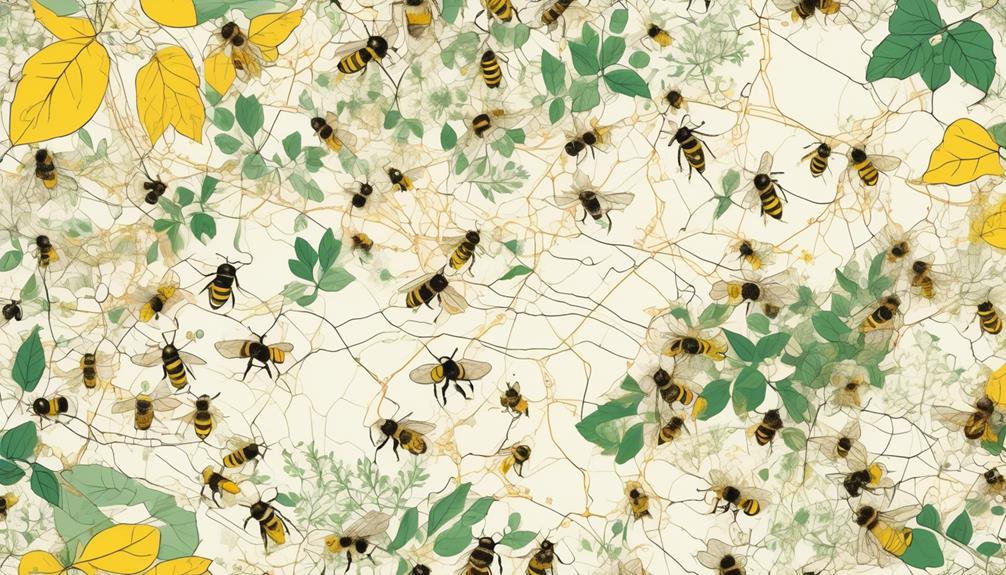
Diving into the range of leaf cutter bees, you'll find that these industrious insects can traverse significant distances, with their travel radius reaching up to 600 meters from their nests in search of food and nesting materials. Such a broad range allows them to access a variety of plants, improving the diversity of their diet and promoting pollination over a wide area.
Interestingly, while these bees are capable of long-distance travel, they tend to prefer staying within a couple hundred meters of their nests. This behavior, known as 'central place foraging', is likely a strategic move to conserve energy and minimize exposure to predators.
To understand this pattern, let's delve into the bee's physiology. Leaf cutter bees are small creatures, with a body size typically less than 2 centimeters. This small size limits their energy reserves, making long journeys more costly. Therefore, they've evolved to prefer shorter foraging trips, optimizing their energy expenditure and increasing their survival chances.
Human Impact on Bee Mobility
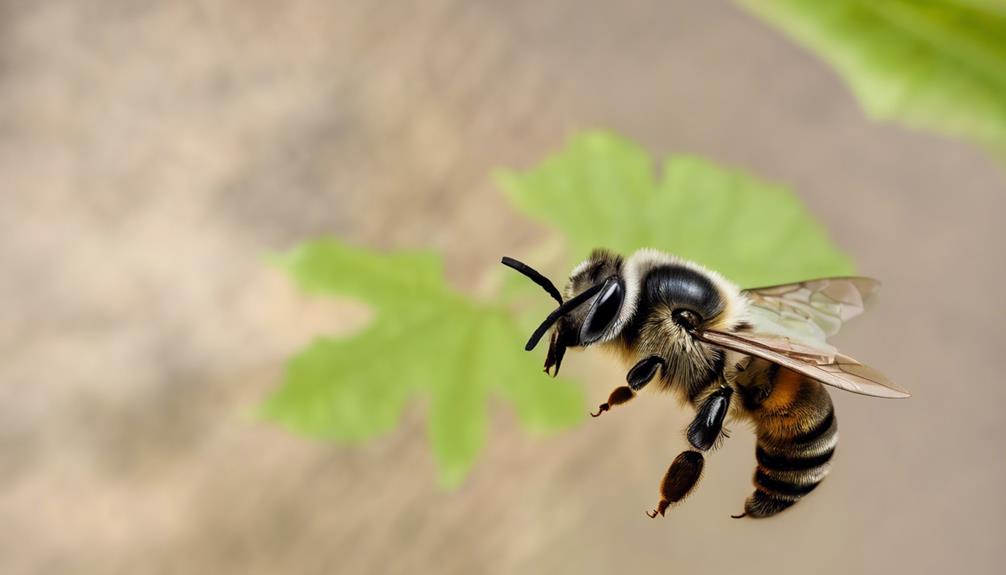
While it's true that leaf cutter bees have evolved for optimal mobility within their natural habitats, it's critical to examine how human activities are affecting their movement patterns. As you may already know, bees rely heavily on their environment for survival and reproduction. Unfortunately, human activities such as deforestation and urbanization can disrupt these patterns and limit their mobility.
Consider this table, which summarizes how two human activities impact leaf cutter bees:
Human Activity | Impact on Bee Mobility |
|---|---|
Deforestation | Reduces available food sources, forcing bees to travel further. |
Urbanization | Introduces barriers that bees must navigate, increasing energy expenditure and reducing overall mobility. |
Not only do these activities reduce the bees' ability to travel and find food, but they also limit their capacity to reproduce. When bees have to expend more energy on travel due to human activities, they have less energy to devote to reproduction. This can lead to a decline in the overall bee population.
As we continue to impact the environment, it's vital to understand how our actions affect these small, yet critical, creatures. Remember, the survival of leaf cutter bees isn't just about them; it's also about the survival of our own species.
Conclusion
In conclusion, you've learned that leaf cutter bees, influenced by various factors, typically travel within a range of around 300 feet. This isn't a hard and fast rule though, as some venture further out.
It's clear human activities significantly impact their mobility. The path of these fascinating creatures is a complex mixture of natural instinct and environmental influence.
As we continue to study their behavior, we can better understand and protect these vital pollinators.

